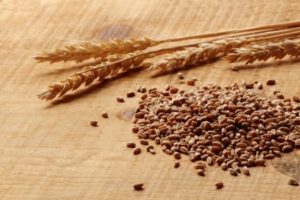What Exactly is Gluten and Why Does it Matter?
 Gluten has been the hot topic word in health and wellness for years now, but it can be tricky to understand where to find gluten and exactly how it interacts with the body. Many people, like those with Celiacs Disease, must avoid all gluten for specific health reasons, while others cut gluten out due to a sensitivity or desire to feel cleaner.
Gluten has been the hot topic word in health and wellness for years now, but it can be tricky to understand where to find gluten and exactly how it interacts with the body. Many people, like those with Celiacs Disease, must avoid all gluten for specific health reasons, while others cut gluten out due to a sensitivity or desire to feel cleaner.
What is Gluten?
Gluten is a combination of two proteins found in wheat, rye, and barley. It affects a dough’s elasticity, which in turn determines the chewiness of a baked product. Certain grains do and don’t contain gluten, which has earned a reputation as being “bad.” Indeed, it is bad for the 18 million Americans people who are gluten-sensitive and the one in every 141 people in the U.S who are gluten-intolerant.
Why Does Gluten Cause Problems?
Since grains containing gluten are high in starches and sugars, they often become fermented by intestinal bacteria. This leads to bloating, cramping, and other abdominal issues. However, those with Celiacs Disease are at especially high risk from gluten because the gluten triggers an immune response that actually damages the intestines and prevents the absorbtion of vital nutrients into the body.
Going Gluten-Free
People around the country are choosing to go gluten-free and eat only grains that do not contain gluten, like sorghum, millet, brown rice, buckwheat, wild rice, quinoa, amaranth, and teff. Even oats can be gluten-free as long as they are not contaminated during processing. But it isn’t just the obvious grains like wheat and barley that need to be avoided in order to go gluten-free. Beer, french fries, pasta, salad dressings, soy sauce, and even some soup contains gluten.
The choice to go gluten-free should be made with the advice and support of a health professional. Simply replacing gluten foods with non-gluten foods does not always guarantee a healthier diet, since some gluten-free choices are devoid of important nutrients, vitamins, and fiber. It’s important to continue eating fruits and vegetables while swapping out foods that contain gluten.

